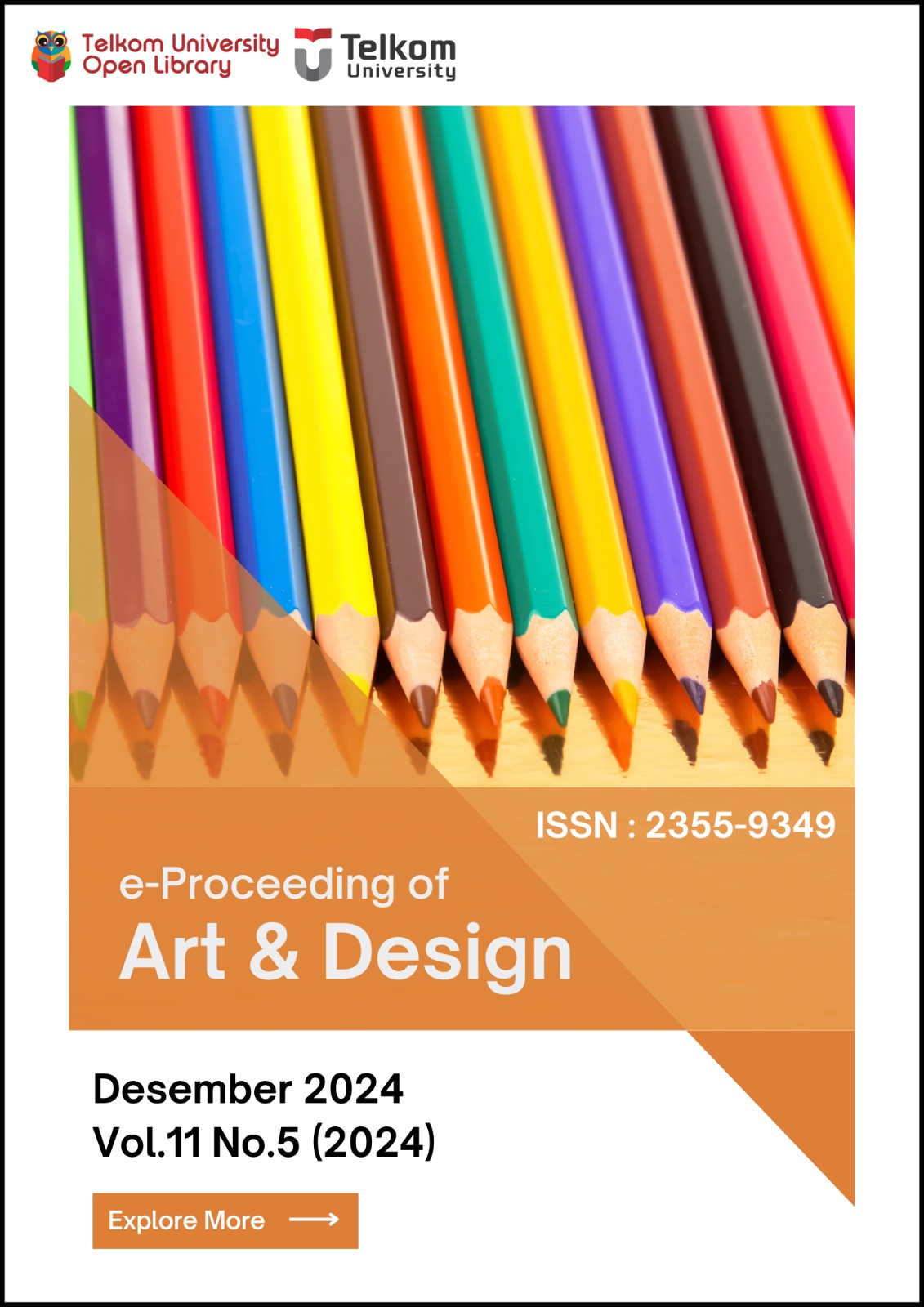COMMERCIAL CAMPAIGN STRATEGIES IN REDUCING IN THE USE OF SINGLE – USE PLASTIC PACKAGING THROUGH ZERO WASTE CAMPAIGN
Abstract
The issue of single-use plastic waste has become a global spotlight because of its negative impact on the environment. A number of large cities in Indonesia, including Jakarta, Semarang, Surabaya, Bandung, Palembang and Medan, have taken part in taking issue with this problem, with the city of Bandung ranking third in terms of the amount of potential waste reaching 1,301 tons every day. From data submitted by the Bandung City Environmental Service, it was revealed that more than 50 tons of plastic waste is produced every day, mainly from food and drink packaging. Studies conducted by the Bandung Institute of Technology show that around 70% of total city waste comes from plastic, posing risks to the environment and public health. Plastic food packaging not only has a negative impact on human health due to its chemical compounds, but is also detrimental to the environment due to its ability to decompose slowly. Lack of public awareness and understanding of the impact of single-use plastic on the environment and health is the main cause of this problem. In addition, small and large businesses that provide a lot of food and drink often choose single-use plastic or double-layer plastic because they are considered safe and able to maintain product quality. To overcome this, the proposed strategy is to launch a commercial campaign regarding zero waste management to change public perception, especially among students, workers and business owners, regarding the use of single-use plastic in food and beverage packaging. The campaign aims to promote environmentally friendly practices, encouraging the reduction, reuse and recycling of plastic waste.
Keywords : commercial campaign, zero waste campaign, small and large business , single – use plastic packaging, Bandung
References
A., Morissan M. dkk.2017. Metode Penelitian Survei. Jakarta: Kencana
Arif Hartoyo, Menggunakan Kemasan Plastik Untuk Pangan Dengan Bijak. Ilmu dan Teknologi Pangan Institut Pertanian Bogor
BPS. (2018). Statistik Lingkungan Hidup Indonesia; Pengelolaan Sampah di Indonesia. Jakarta; Badan Pusat Statistik Indonesia
Dagun, S. M. (2006). Kamus Besar Ilmu Pengetahuan. Jakarta: Lembaga Pengakajian Kebudayaan Nusantara (LPKN)
Danton Sihombing (2015). Tipografi dalam Desain Grafis. Jakarta: Gramedia.
Defitri, M. (2023, March 15). Disiplinnya Jepang dalam Hal Pengelolaan Sampah. Waste4Change. https://waste4change.com/blog/disiplinnya-jepangdalam-hal- pengelolaan-sampah/
Hasanuddin, Mugiarso, Sari, P. N., & Yoganingsih, T. (2021). Sampah: Banjir, Penyakit, Dan Nilai Ekonomi. Jurnal Abdimas Ekonomi Dan Bisnis (JAMEB), 1(1), 2019–2022.
Hasibuan, R. (2016). Analisis dampak limbah/sampah rumah tangga terhadappencemaran lingkungan hidup. Jurnal Ilmiah Advokasi, 4(1), 42-52.
Iacovidou, E., & Dora, M. (2019, June 24). Kemasan plas}k masih diperlukan untuk mencegah makanan jadi sampah dan melindungi lingkungan. The Conversa}on. https://theconversa}on.com/kemasan-plastik-masihdiperlukan- untuk-mencegah-makanan-jadi-sampah-dan-melindungilingkungan-1191
Karuniastuti, N. (2013). Bahaya plastik terhadap kesehatan dan lingkungan. Swara Patra, 3(1). Notoatmodjo, Soekidjo, 2010. Promosi Kesehatan Teori dan Aplikasi. Jakarta; Rineka Cipta.
Putra, H. P., & Yuriandala, Y. (2010). Studi Pemanfaatan Sampah Plastik Menjadi Produk dan Jasa Kreatif. Jurnal Sains &Teknologi Lingkungan, 2(1), 21–31. https://doi.org/10.20885/jstl.vol2.iss1.art3
Sugiyono. (2016). Metode Penelitian Kuantitatif, Kualitatif dan R&D. Bandung: PT Alfabet
Sasetyaningtyas, Dewi.(2019). Sustaination: Zero Waste Bukan Hanya tentang Mengganti Sedotan Plastik
Anindito, B.(2014). Definisi Kampanye. Prezi. Retrived 12 Mei 2018, from https://prezi.com/jigpulc1rbit/definisi-kampanye
Defitri, M. (2022, August 6). Kurangi Sampah Plastik dengan Kemasan Alterna}f. Waste4Change. https://waste4change.com/blog/kurangi-sampah- plas}kdengan-kemasan-alterna}f/
How to Be a Fresh and Sustainable Food Brand. (n.d.). Dephna. https://www.dephna.com/insights/how-to-be-a-sustainable-food-brand
Mangkoko. 2015. Mangkoko.com. Psikologi Warna Biarkan Warna Berbicara. http://mangkoko.com/ruang_baca/psikologi-warna-biarkanwarnaberbicara
Sensiklo. 2014. Ensiklo.com. Makna Psikologi Warna. http://ensiklo.com/2014/10/makna-psikologi-warna/ Si-pedia. 2014.
Si-pedia.com. Psikologi Warna Arti Warna Dan Dampaknya. http://www.si-pedia.com/2014/12/psikologi-warna-arti-warna-dandampaknya.html
Surabaya e-health. Ketahui Kriteria Pada Kemasan Plastik yang Anda Gunakan. http://www.surabaya-ehealth.org/dkksurabaya/berita/waspada-bahayakemasan- botolplastik






